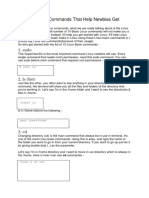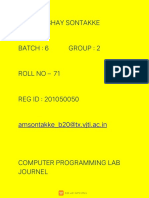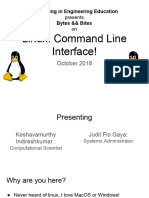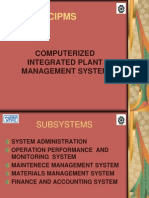0% found this document useful (0 votes)
14 views7 pagesLinux Commands For Beginners
This document is a beginner's guide to essential Linux commands, covering topics such as navigating the filesystem, file management, editing files, system monitoring, and software installation. It provides practical command examples and tips for effective usage of the Linux command line. The tutorial aims to equip newcomers with foundational skills necessary for further exploration of Linux functionalities.
Uploaded by
licey11961Copyright
© © All Rights Reserved
We take content rights seriously. If you suspect this is your content, claim it here.
Available Formats
Download as PDF, TXT or read online on Scribd
0% found this document useful (0 votes)
14 views7 pagesLinux Commands For Beginners
This document is a beginner's guide to essential Linux commands, covering topics such as navigating the filesystem, file management, editing files, system monitoring, and software installation. It provides practical command examples and tips for effective usage of the Linux command line. The tutorial aims to equip newcomers with foundational skills necessary for further exploration of Linux functionalities.
Uploaded by
licey11961Copyright
© © All Rights Reserved
We take content rights seriously. If you suspect this is your content, claim it here.
Available Formats
Download as PDF, TXT or read online on Scribd
/ 7





















































































